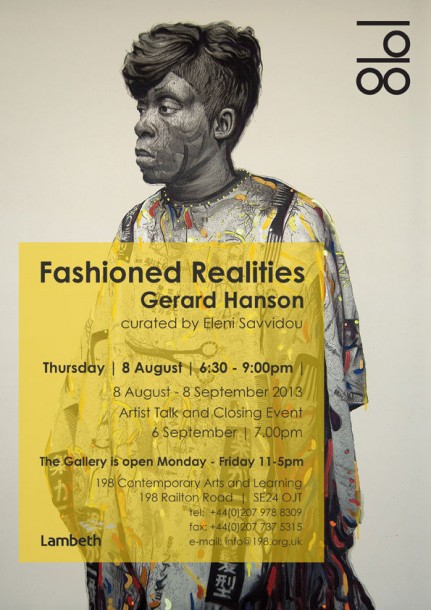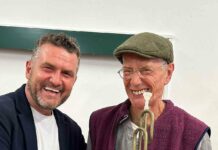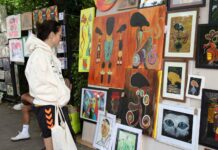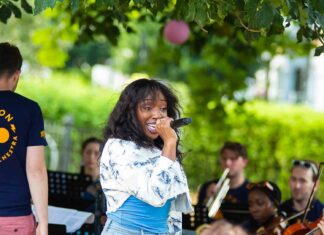by Arts & Culture Reporter, Sophie Gainsley

Photograph by Sophie Gainsley
Tucked away in suburban Brixton, a display of paintings pulsates with Jamaican rhythm. Artist Gerard Hanson transforms black and white photographs with sweeps, waves and dabs of colour into exotic, lively portraits. These ‘photo paintings’ document a problem that has been embedded in Jamaican culture. ‘Eurocentric hair’ styles in the form of wigs, hair straightening and weaving has become inherent to daily life.
Whilst visiting his father’s homeland, Jamaica, Hanson witnessed first-hand the abundance of hair salons lining Kingston’s streets. Speaking to him at the private view, he remarked that he thought it possible that Jamaicans spend more money on their hair than on food. Heavy weaves pulling at the scalp can cause bald spots while the process of hair straightening often involves applying caustic substances, (such as relaxers containing lye) which need to be applied by an experienced hairstylist to avoid burning the scalp and ears. The more desirable and expensive hair treatments become an ornament of wealth and create visual tiers of social status.
This problem dates back to pre-1960s to the British colonies. Women without straightened or westernised hair styles were excluded from certain jobs. The antiquated rejection of natural hairstyles has been passed down into today’s society and influences standards of beauty and extreme measures taken to achieve these aesthetic ideals.
 Hanson, making light of aproblem which obviously concerns him greatly, referred to his people as true ‘victims of fashion’, for these synthetic hair styles have become so interwoven into their culture that it is unusual to see a women wear her hair naturally.
Hanson, making light of aproblem which obviously concerns him greatly, referred to his people as true ‘victims of fashion’, for these synthetic hair styles have become so interwoven into their culture that it is unusual to see a women wear her hair naturally.
Movements like “Black is beautiful” in the 60s attempted to encouraged men and women to stop trying to erase African-identified traits by straightening their hair and attempting to lighten their skin by bleaching. It brought renewed identity and black pride to communities and the afro style became a powerful political symbol. But now celebrity culture and mass media set the aspirational trends across the world and display predominantly Westernised styles.
As a Jamaican born and raised in Europe, Hanson connects with the culture of his people by photographing their behaviour. With bold, vibrant marks on canvas, he outlines this cultural problem, gesturing for change by subtly alter the personal photographs. The bright jazzy acrylics contrast strongly with the mute, colourless photographs beneath them. Colour covers tone in a battle against European photography and the loud, exotic colours of Jamaica. A personal conflict of cultural identity and cultural pride. Hanson’s turbulent thoughts played out in paint on canvas.
The exhibition is curated by Eleni Savvidou at 198 Contemporary Arts and Learning Centre, 198 Railton Road. There will be a talk by the artist on 6 September at 7.00pm before the exhibition comes to a close on 8 September.

















